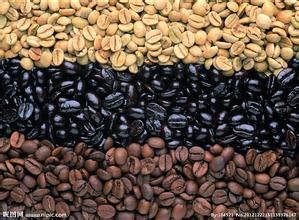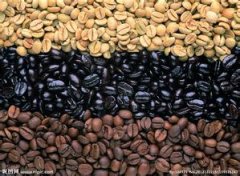Rwanda Coffee Flavor description Grinding characteristics introduction of Fine Coffee beans in producing areas
The watershed between the Congo basin and the Nile basin runs through Rwanda from north to south, with about 80 per cent of the country draining from the Nile and about 20 per cent from the Ruzi River and Lake Tanganyika. The longest river in the country is the Niabalongo River (Nyabarongo River) in the southwest, which turns north, east and southeast into the Ruwuwu River and forms the Kagera River, which flows due north along the eastern border of Tanzania. Both the Niabarongo River and the Cagella River will eventually flow into Lake Victoria. There are many lakes in Rwanda, of which Lake Kivu is the largest. The lake is located at the bottom of the Aberdeen Rift Valley and extends along the western border of Rwanda. With a maximum depth of 480 meters, it is one of the 20 deepest lakes in the world. Several other larger lakes include Lake Burera, Lake Ruhondo, Lake Muhazi, Lake Rweru, and Lake Ihema, the largest of a series of lakes in the eastern plains of Akagera National Park, which has a temperate and tropical plateau climate and has lower temperatures than typical equatorial countries because of its high altitude. The daily temperature in Kigali, located in the middle of the country, is generally between 12 and 27 °C, with small fluctuations throughout the year. There is also a large temperature difference in some parts of the country, with temperatures lower in the mountainous west and north than in the eastern low-lying areas. Rwanda has two rainy seasons each year, each from February to June and the second from September to October, while there are also two dry seasons, with a longer duration from June to September, often with no rainfall at all. the other lasts from December to February, which is relatively less serious than the previous one. Rainfall varies from region to region, with more rainfall in the west and northwest than in the east and southeast. However, the rainy season pattern has changed as a result of climate change. According to a report by Strategic foresight, the number of overcast and rainy days each year is sometimes smaller, but the rainfall is greater in a short period of time. In other cases, there will be frequent torrential downpours in a single day, more than in the past month combined. In addition, there are cases where the rainy season comes late or ends early.
Rwanda has been growing coffee since colonial times. Although the crops are mainly coffee, the quality of coffee produced in Rwanda is not outstanding, and its status in the coffee world is low, and few people pay attention to it. Most of the coffee varieties grown in Rwanda are bourbon. Rwanda, known as the "country of a thousand hills", has a high-altitude mountain environment, fertile volcanic soil and abundant precipitation, and has a climate conducive to the growth of coffee trees. The advantages of varieties and excellent natural conditions should have produced high-quality coffee, but why the quality of its coffee performance is not satisfactory? The reason lies in the later stage of processing. Improper handling will reduce the quality of coffee and sacrifice a lot of good flavor in vain. Harvesting, planting, treatment, grading, transportation and other links will directly affect the quality of raw coffee beans, in which the lack of control in a certain link will become a stumbling block to good coffee.
The coffee fruit needs to be transported to the processing plant as soon as possible after picking, but due to the lack of domestic facilities, it is unable to deal with the fruit at the first time. The fruits are piled up after being picked, which will continue to develop and accelerate mildew and decay due to lack of ventilation. Rotten fruits will affect the quality of coffee and show defective flavor.

Important Notice :
前街咖啡 FrontStreet Coffee has moved to new addredd:
FrontStreet Coffee Address: 315,Donghua East Road,GuangZhou
Tel:020 38364473
- Prev

Rwanda Coffee Flavor description Grinding characteristics introduction of Fine Coffee beans in producing areas
The watershed between the Congo basin and the Nile basin runs through Rwanda from north to south, with about 80 per cent of the country draining from the Nile and about 20 per cent from the Ruzi River and Lake Tanganyika. The longest river in the country is the Niabalongo River (Nyabarongo River) in the southwest, which turns north, east and southeast and flows into the Ruwuwu River to form the Kagaila River.
- Next

Description of Colombian Coffee Flavor, characteristics of Grinding degree, introduction to the taste price of varieties in producing areas
The suitable climate in Colombia provides a real natural pasture for coffee. Coffee trees in Colombia are mainly cultivated in the Andes, on steep slopes about 1300 meters above sea level, where the annual temperature is about 18 degrees Celsius, annual rainfall is 2000 to 3000 millimeters, latitude 1-11 15 north, longitude 72-78 west, and the specific range of elevation can exceed 2.000 meters. By
Related
- Detailed explanation of Jadeite planting Land in Panamanian Jadeite Manor introduction to the grading system of Jadeite competitive bidding, Red bid, Green bid and Rose Summer
- Story of Coffee planting in Brenka region of Costa Rica Stonehenge Manor anaerobic heavy honey treatment of flavor mouth
- What's on the barrel of Blue Mountain Coffee beans?
- Can American coffee also pull flowers? How to use hot American style to pull out a good-looking pattern?
- Can you make a cold extract with coffee beans? What is the right proportion for cold-extracted coffee formula?
- Indonesian PWN Gold Mandrine Coffee Origin Features Flavor How to Chong? Mandolin coffee is American.
- A brief introduction to the flavor characteristics of Brazilian yellow bourbon coffee beans
- What is the effect of different water quality on the flavor of cold-extracted coffee? What kind of water is best for brewing coffee?
- Why do you think of Rose Summer whenever you mention Panamanian coffee?
- Introduction to the characteristics of authentic blue mountain coffee bean producing areas? What is the CIB Coffee Authority in Jamaica?

